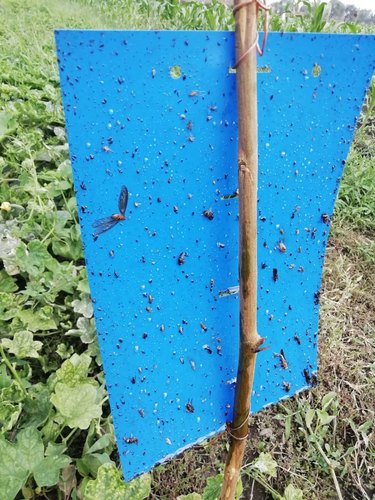Blue Sticky Traps: Use blue sticky traps to monitor and trap thrips. It should be hung when the crop is still young. How does blue sticky trap work? Sticky traps are essential in the detection and partial elimination of many species of flying pests in greenhouses. Sticky traps make it possible to detect pests at an early stage and then use biological measures to combat them. This prevents unnecessary applications of chemicals. Moreover, counting the captured insects on the sticky traps on a regular basis makes clear when pests are present in the greenhouse, how fast their population is developing, and when their population is likely to reach its peak. In this way the grower is much better prepared for potential threats. With regards to tall crops such as cucumber, tomato and pepper, position the traps just above the top of the plant and adjust while the plants grow. When it comes to crops with a low canopy, support the traps by canes or wire holders and install them maximum 30 cm above the crop. The traps must be placed in areas where the risk of pest infestation is high, fox example at doors, gable ends and lateral ventilation openings. With regards to monitoring purposes, the advised rate is five traps per 1, 000 m². If the traps must contribute to the biological control of pests in so-called hot spots (i.e. mass trapping), use at least one trap per 20 m² or at most one trap per 2 m². Both small and larger traps can be used for this purpose. See the machine in working : https://youtu.be/10ELo91ISvk

This is your website preview.
Currently it only shows your basic business info. Start adding relevant business details such as description, images and products or services to gain your customers attention by using Boost 360 android app / iOS App / web portal.


Submit Your Enquiry